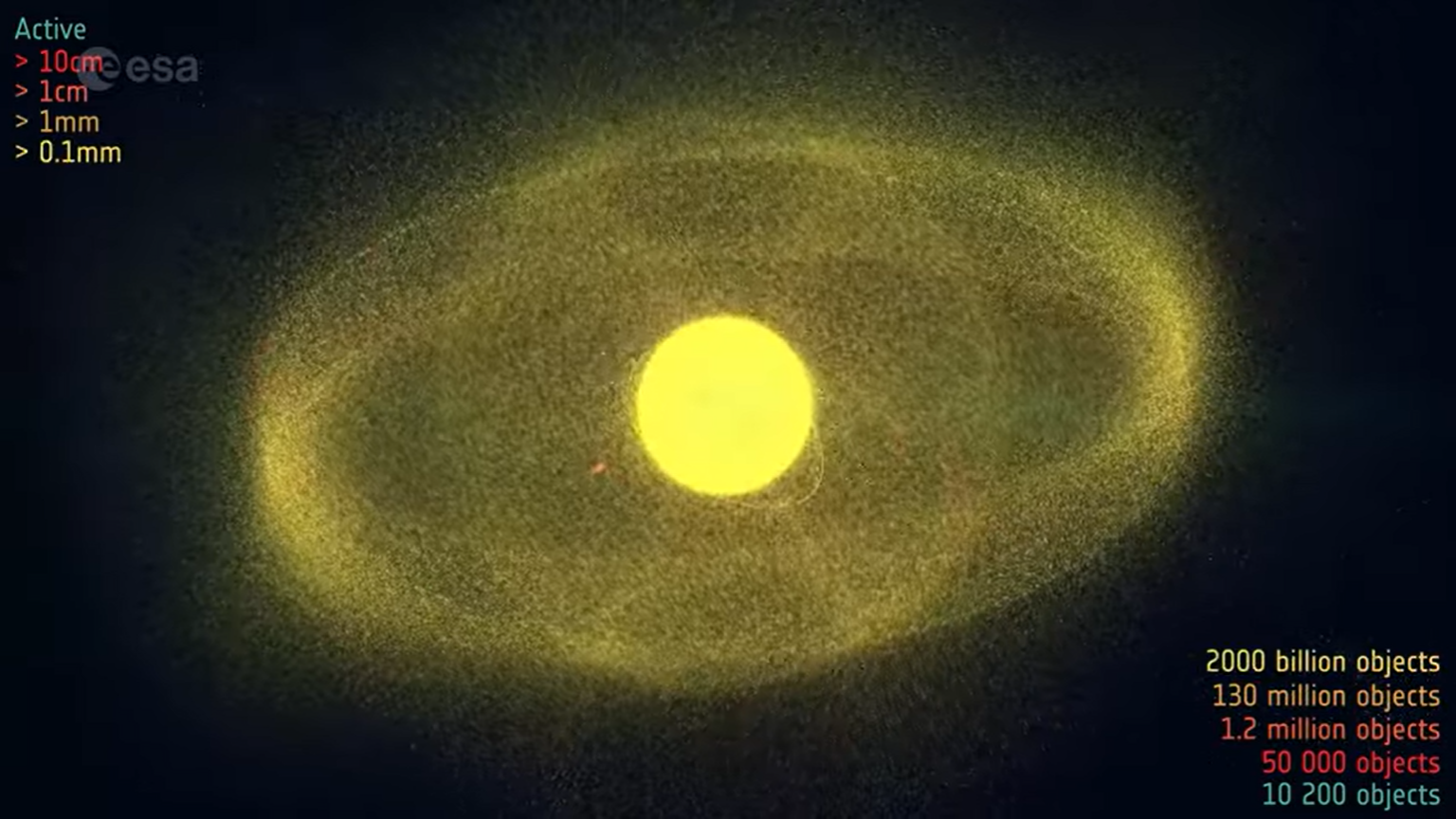No Escape: Dive Into a Black Hole (Infographic)

When matter is compressed beyond a certain density, a black hole is created. It is called black because no light can escape from it. Some black holes are the tombstones of what were once massive stars. An enormous black hole is thought to lurk at the center of the Milky Way galaxy.
All the mass of a black hole is concentrated into a point at its center called the singularity. Gravity surrounding the singularity is so strong, you would have to travel faster than light to escape. This creates a spherical zone surrounding the singularity called the event horizon from which nothing can escape.
At about one and a half times the diameter of the event horizon, photons become trapped in circular orbits around the black hole. [Gallery: Black Holes of the Universe]
All the mass of a black hole is concentrated into a point at its center called the singularity. Gravity surrounding the singularity is so strong, you would have to travel faster than light to escape. This creates a spherical zone surrounding the singularity called the event horizon from which nothing can escape.
In theory, a black hole of any size could exist. A black hole with the mass of our sun would be 3.7 miles (6 km) in diameter. In practice, the death of a star like the sun does not compress the material enough to form a black hole. Stars with about two times the sun’s mass or more form black holes. Astronomers recognize two major types. [The Strangest Black Holes in the Universe]
Stellar-mass black holes have the mass of several sun-sized stars. They form when a dying star explodes in a supernova, then collapses under its own gravity. Matter drawn toward the black hole forms an accretion disc.
Supermassive black holes can have billions of times our sun’s mass. Matter drawn toward a supermassive black hole is compressed, heats up and may be blasted out into jets thousands of light-years long.
Breaking space news, the latest updates on rocket launches, skywatching events and more!
Stellar-mass black holes are scattered throughout the galaxy. A supermassive black hole lies at the core of many galaxies, including our own. The Milky Way’s supermassive black hole is called SgrA* (Sagittarius A-star), and it is seen from Earth in the constellation Sagittarius. The supermassive black hole is about 26,000 light-years away, and has a mass of at least 4 million times the mass of our sun.
The powerful gravity of a black hole distorts light, space and time. One effect is gravitational lensing. A black hole between us and a distant galaxy will bend the rays of light, causing our view of the galaxy to be warped. We have yet to photograph a black hole in detail, but simulations suggest that the supermassive black hole at the Milky Way’s center might appear to be a distorted crescent.
- Black Hole Quiz: How Well Do You Know Nature's Weirdest Creations?
- What Will First Photos of Black Holes Look Like?
- The Black Hole That Made You Possible (Video Show)
Follow SPACE.com on Twitter @Spacedotcom. We're also on Facebook & Google+.

Karl's association with Space.com goes back to 2000, when he was hired to produce interactive Flash graphics. From 2010 to 2016, Karl worked as an infographics specialist across all editorial properties of Purch (formerly known as TechMediaNetwork). Before joining Space.com, Karl spent 11 years at the New York headquarters of The Associated Press, creating news graphics for use around the world in newspapers and on the web. He has a degree in graphic design from Louisiana State University and now works as a freelance graphic designer in New York City.
